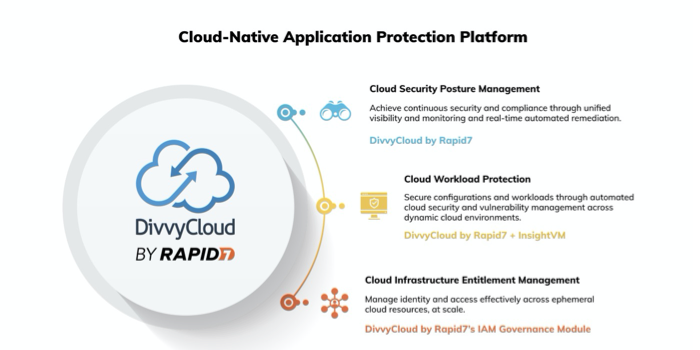

The cloud security solutions market is growing rapidly and there are many types of solutions to support your specific business needs. But figuring out the right tool, let alone the right type of tool, can be difficult. This overview offers insight into the main concepts of five archetypes that fall under the broader cloud security management platform umbrella:
For more information about Cloud Security, call our security consultants at +31 (0) 345 506 105, send an email to info@isoc24.com or fill out our contact form via button below.
Gartner developed and defined these archetypes, which often overlap in terms of capabilities, to provide businesses with analysis that better informs their decision making. The last two, CIEM and CNAPP, are recent additions.
For each category, we will describe:
What is it? We will look at what each tool category does and highlight some notable features.
In what context is it best used? In these sections, we will look at the best deployment patterns and implementation scenarios for each tool.
Per Gartner, deployment patterns for cloud fall into three general groupings:
Gartner assessed CASB, CWPP, and CSPM tools across these three deployment patterns for single, multi, and hybrid cloud implementations. We will take a look at how they ranked and in what scenarios the tool category could be most useful. Please note that Gartner has not yet formally assessed the CIEM and CNAPP archetypes.
Benefits and limitations? Why use a particular tool category? What are the potential drawbacks to be aware of? We’ll break down the positives and negatives for each one.
iSOC24 carries the Rapid7 InsightCloudSec (formerly known as DivvyCloud) solution in its portfolio. Please see below for a description of the solution and its advantages.
Where does Rapid7 InsightCloudSec fit in?
The combination of capabilities and broad positioning across the CSPM, CWPP, and CIEM categories supports InsightCloudSec’s placement into Gartner’s newest archetype, CNAPP. InsightCloudSec fits nicely in the CSPM category and has become recognized as an industry leader in this capacity. InsightCloudSec also checks off boxes in the CWPP category, and our position is made even stronger when working in conjunction with Rapid7’s InsightVM tool. Furthermore, InsightCloudSec’s recently released Cloud IAM Governance module fits into the CIEM category as well.
What makes InsightCloudSec stand out?
We’ve approached cloud security in a unique way. Here’s how we’re different.
When a threat is identified, InsightCloudSec can perform automated remediation actions, including reconfiguring cloud services, making changes to cloud infrastructure, driving human-centered workflows with integration into systems like ServiceNow and Jira, and orchestrating workflow actions in other security and management systems.

Rapid7 InsightCloudSec’s Cloud IAM Governance module fits into the CIEM category. This new IAM Governance Module helps you:
Balancing cloud security and compliance to support DevOps is critical, as the fundamental role of traditional security teams is changing substantially. As we look to integrate security into the DevOps culture, it is important to rethink our approach and minimize real or perceived friction. A key part of this evolution is adoption of modern tools that support the developer-driven, API-centric, and infrastructure-agnostic patterns of cloud-native security. Rapid7 offers exactly that with an InsightCloudSec and InsightVM integration that brings best-in-class capabilities together to solve problems holistically.
When used in combination with Rapid7’s InsightVM tool and its CWPP capabilities, InsightCloudSec’s position as a CSPM solution is strengthened even more, giving customers the ability to scan for vulnerabilities and baseline compliance. The combination of InsightVM and InsightCloudSec exemplifies the convergence of CWPPs and CSPMs into the new CNAPP category. By using both InsightVM and InsightCloudSec concurrently, organizations get the best of both worlds.
CSPM and CIEM tools, like InsightCloudSec, are important investments for organizations seeking to innovate while staying secure in the cloud. CSPMs provide incredible visibility, monitoring, and detection while taking security a step further — automating responses to mitigate potential risks. CSPMs are uniquely positioned to handle the current and future challenges that make it difficult for organizations to stay secure in the cloud. And with the challenges of identity and access posing significant challenges to cloud security in the near term, the CIEM archetype cannot be overlooked. Fortunately, InsightCloudSec’s IAM Governance module fits into this category.
Going beyond CASBs, CWPPs, and CSPMs and into the realm of CNAPPs, the combination of InsightVM and InsightCloudSec offers the best of both worlds as we move toward the next generation of cloud-native security solutions.
Interested in how InsightCloudSec and/or InsightVM can help fuel innovation without sacrificing security? Schedule a personalized demo with one of our cloud security experts.
For more information about Cloud Security, call our security consultants at +31 (0) 345 506 105, send an email to info@isoc24.com or fill out our contact form via button below.